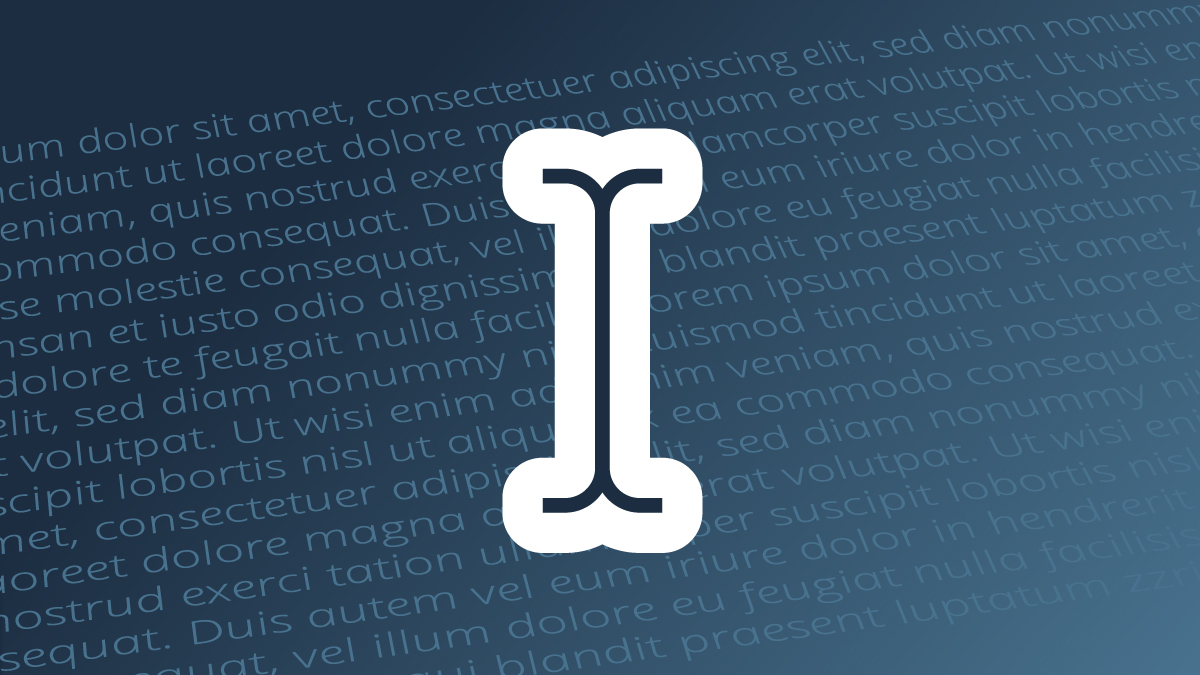In web design and graphic/layout design, it is extremely common to design a layout that will later incorporate specific text. However, at the time of the wireframe and mockup, in the case of web design; or ad/brochure layout, in the case of graphic design, the exact text may not yet be available. In such cases however, if the approximate amount of text that will later occupy the wireframe, mockup, or layout is known, a designer may insert dummy copy for the time being. This dummy copy, also referred to as placeholder text, allows viewers to maintain their focus on the design/graphical elements and composition of the piece in question, instead of being distracted by the accuracy of the copy. This is where lorem ipsum comes in. Lorem ipsum is a block of text adapted from “De finibus bonorum et malorum,” a first century BC text by Marcus Tullius Cicero, who lived from January 3rd, 106 BC to December 7th, 43 BC. Cicero exerted a high degree of influence on the Latin language and was respected as not only a linguist, but also lawyer, orator and philosopher. Of such note was Cicero, that he was one of the subjects in one of Lucius Mestrius Plutarchus’ (aka Plutarch) “Parallel Lives.”
Lorem ipsum has been in use in typesetting since (at least) the 1960s and was reintroduced by Aldus Corporation for digital use in the 1980s.
The original part of Cicero’s text that contains the oft used portion of lorem ipsum reads as below. Note however that this is not all used in typical lorem ipsum, but just a portion.
lorem ipsum, quia dolor sit amet consectetur adipisci[ng] velit, sed quia non numquam di[do] eius mo tempora inci[di]dunt, ut labore et dolore magnam aliquam quaerat voluptatem. Ut enim ad minima veniam, quis nostrum exercitationem ullam corporis suscipit laboriosam, nisi ut aliquid ex ea commodi consequatur? Quis autem vel eum iure reprehenderit, qui in ea voluptate velit esse, quam nihil molestiae consequatur, vel illum, qui dolorem eum fugiat, quo voluptas nulla pariatur?
At vero eos et accusamus et iusto odio dignissimos ducimus, qui blanditiis praesentium voluptatum deleniti atque corrupti, quos dolores et quas molestias excepturi sint, obcaecati cupiditate non provident, similique sunt in culpa, qui officia deserunt mollitia animi, id est laborum.
Lorem Ipsum Translation
Loves or pursues or desires to obtain pain of itself, because it is pain, but occasionally circumstances occur in which toil and pain can procure him some great pleasure. To take a trivial example, which of us ever undertakes laborious physical exercise, except to obtain some advantage from it? But who has any right to find fault with a man who chooses to enjoy a pleasure that has no annoying consequences, or one who avoids a pain that produces no resultant pleasure?
On the other hand, we denounce with righteous indignation and dislike men who are so beguiled and demoralized by the charms of pleasure of the moment, so blinded by desire, that they cannot foresee the pain and trouble that are bound to ensue; and equal blame belongs to those who fail in their duty through weakness of will, which is the same as saying through shrinking from toil.
Now having been used for the last 50 years and becoming commonplace in today’s world of web and graphic design, lorem ipsum is probably here to stay.
If Cicero had only known, he might have proclaimed, in the words of his near-contemporary, Quintus Horatius Flaccus (aka Horace), “Exegi monumentum aere perennius.” Translation: “I have erected a monument more lasting than bronze.”
